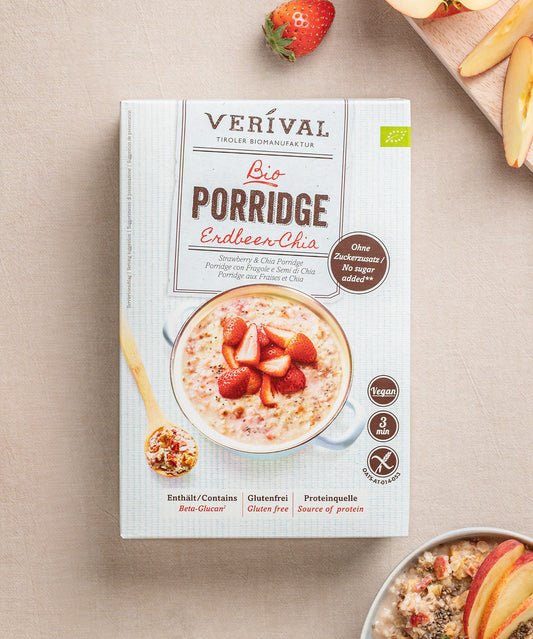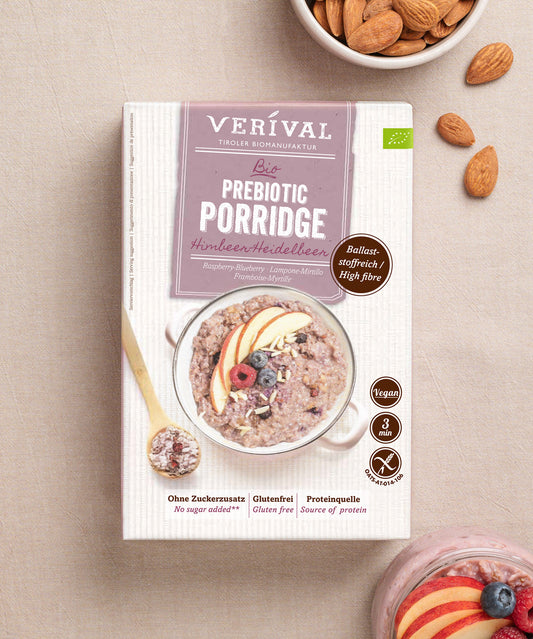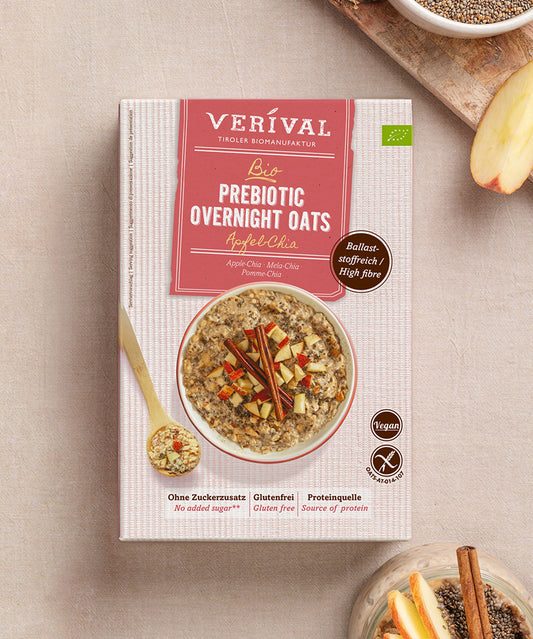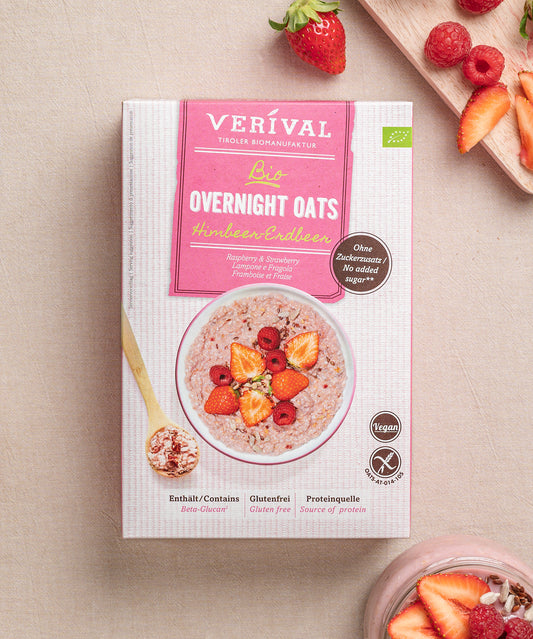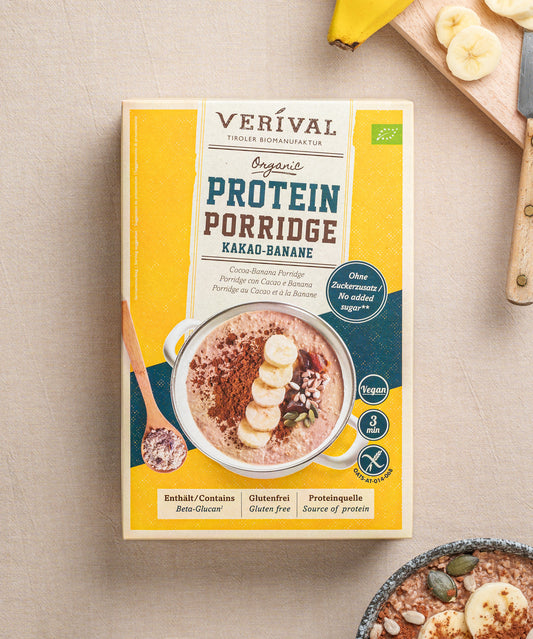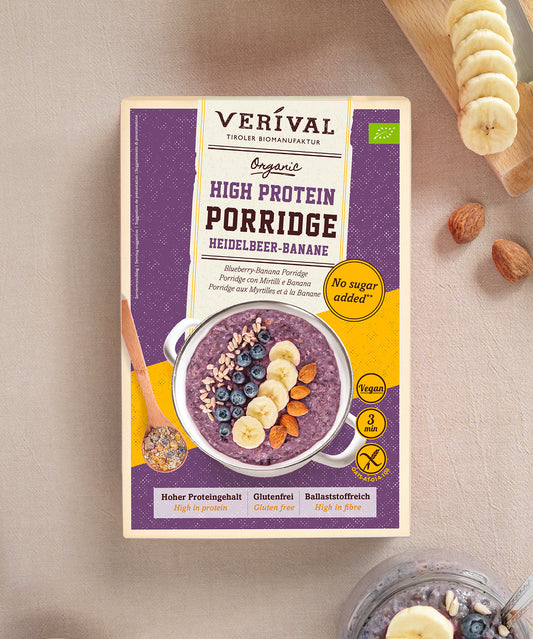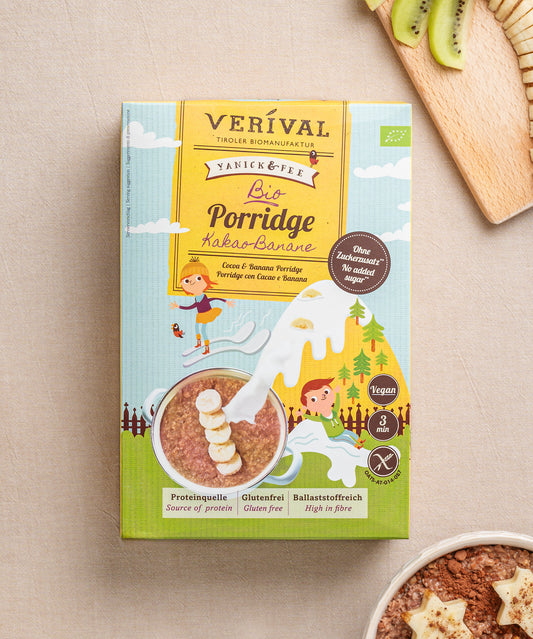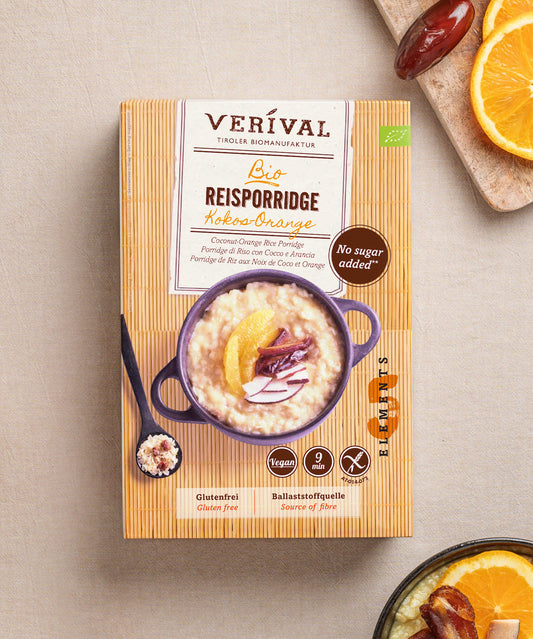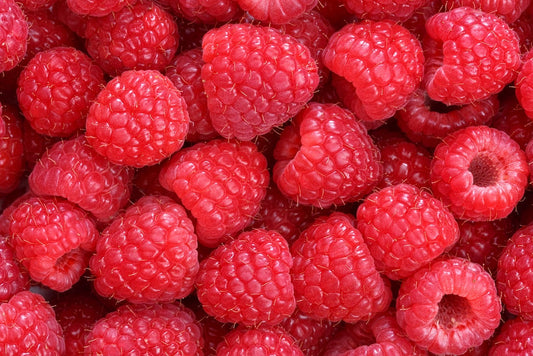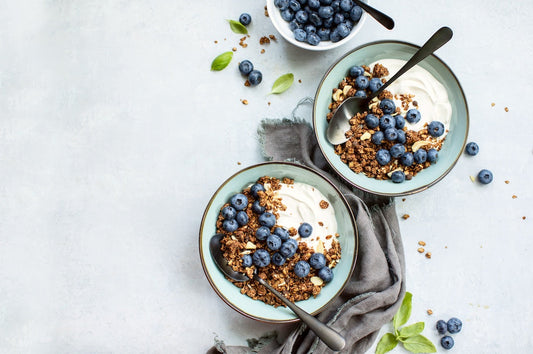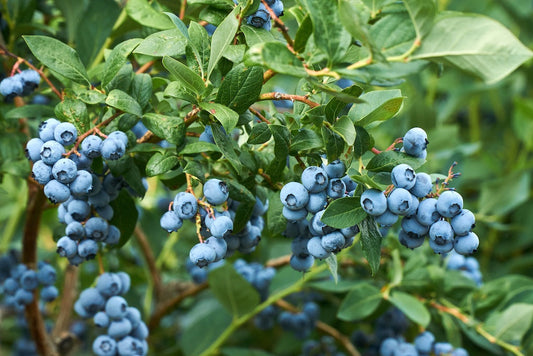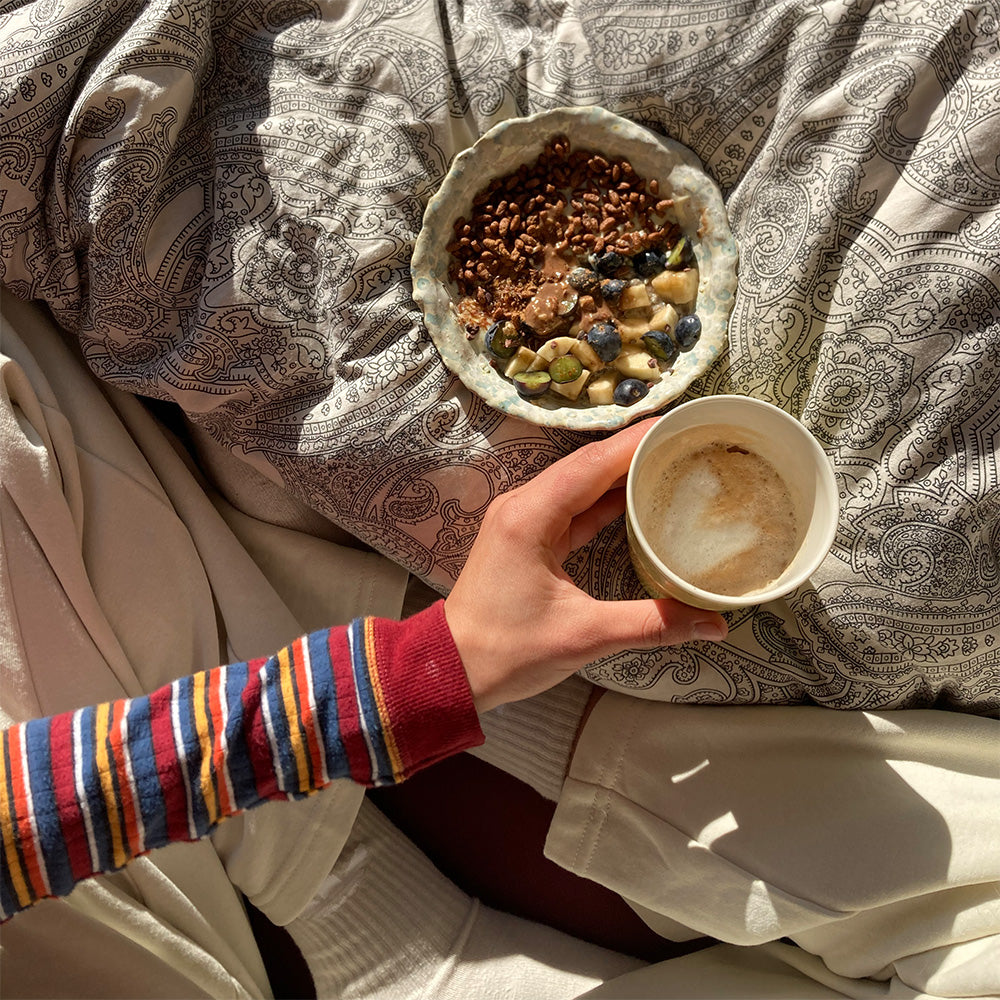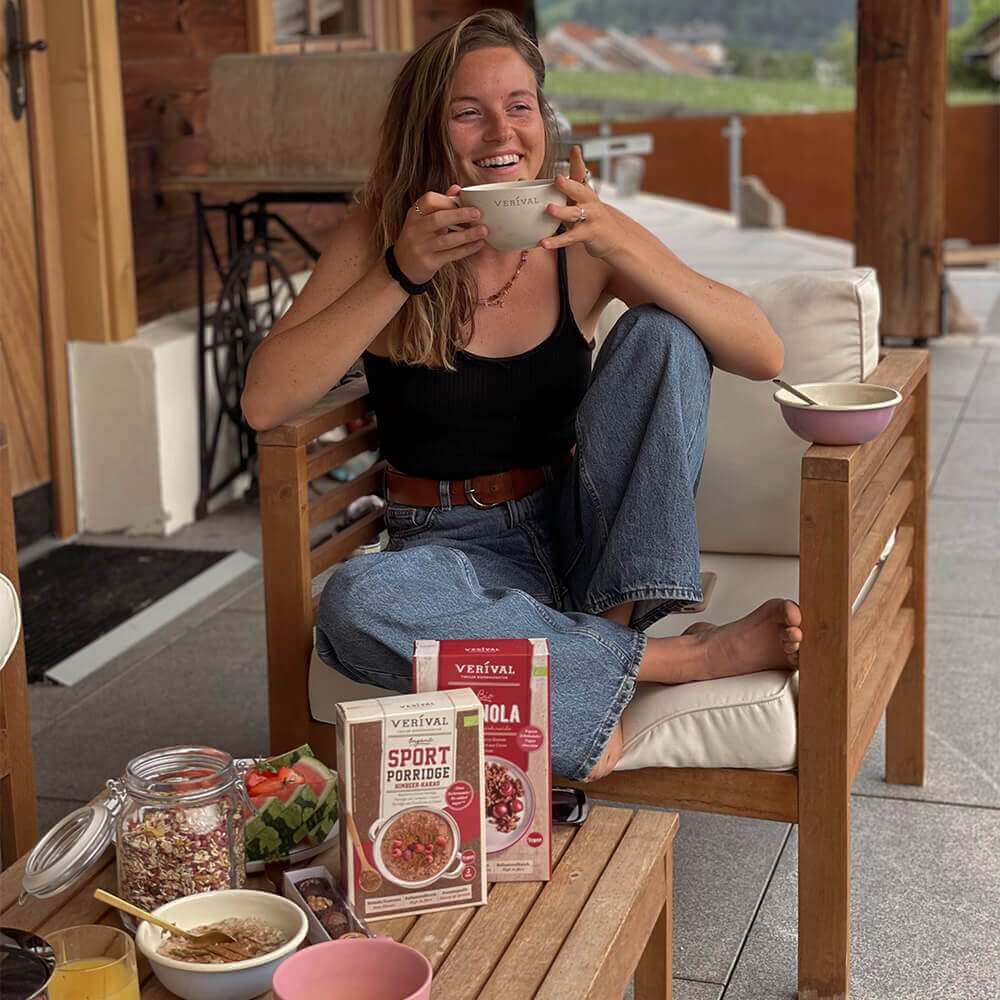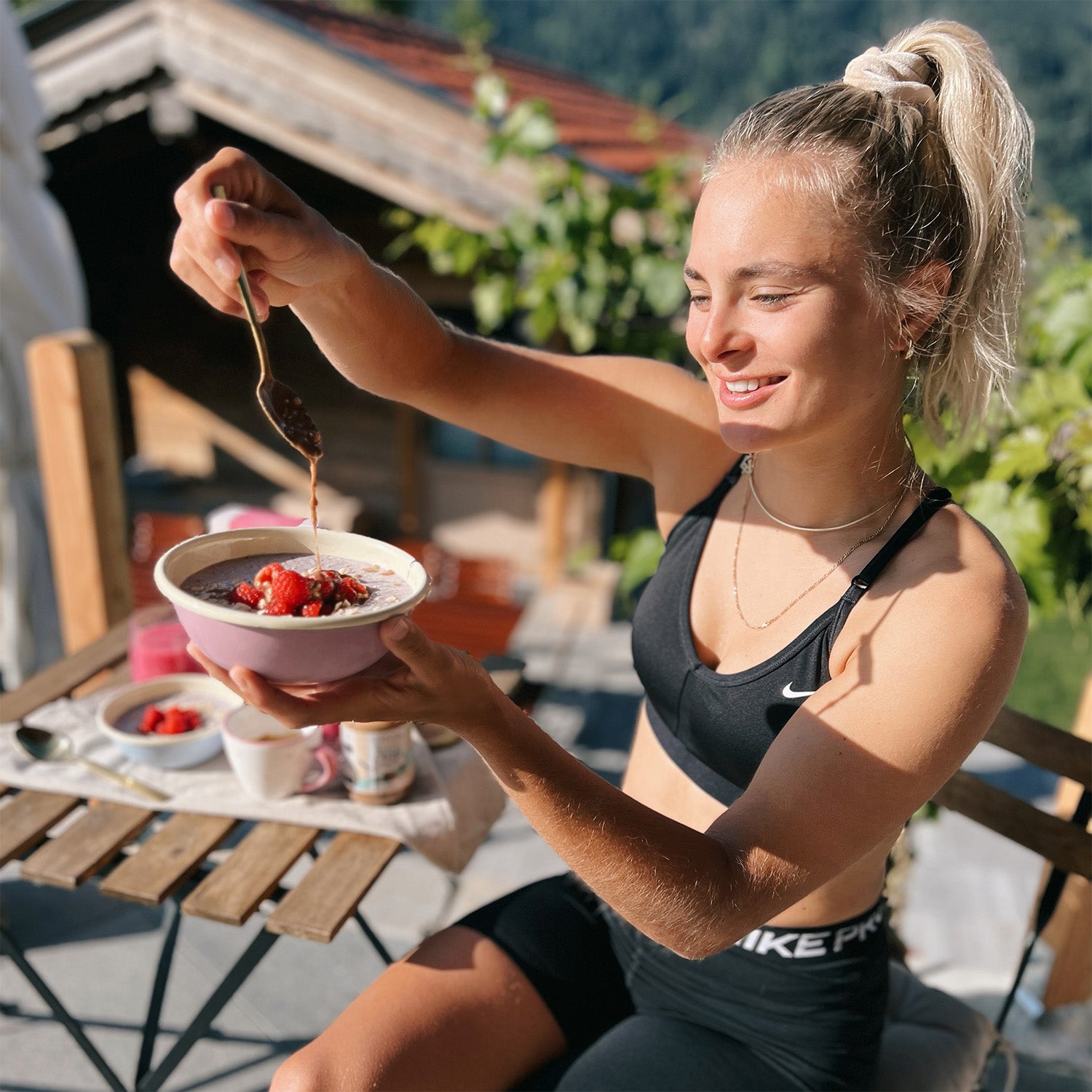Do you want your child to start the day with a healthy breakfast? Then cereals are clearly the way to go.
Semolina porridge is often the first porridge that babies are given. And many children love porridge for breakfast. But what about the cereal itself? Is it really that healthy? What role does wholegrain play? And why is oat so great? You can find the answers to these questions in this blog!
Healthy breakfast for children
Carbohydrates as an energy supplier for children
It's clear that children need a lot of energy to stay healthy. Energy is supplied mainly by fat and carbohydrates (also known as carbohydrates for short), as well as by protein. Experts advise that children get between 55 and 60 percent of their energy from carbohydrates. Carbohydrates not only provide energy, they are also necessary for the development of bones and cartilage.
They are also needed for burning fat. Carbohydrates include starch, sugar and fibre. They are found in cereals and potatoes, but also in vegetables, fruit, pastries and confectionery. It is important which carbohydrates your child eats. An important point is the blood sugar level.
If you eat dextrose, for example, it enters the bloodstream very quickly. It has a high glycaemic index, which means that the blood sugar level rises quickly. Insulin is released. Shortly after eating, you get hungry again. Sweet drinks, confectionery, baked goods with little fat from white flour and food with a lot of lactose have the same effect.
Your child should not eat too much of these. And then vitamins and minerals are needed for healthy growth. This is the case, for example, with whole grain cereals. This makes you fit. Only with a balanced, healthy breakfast can children optimally meet the demands of kindergarten and school life.
Therefore, complex carbohydrates and lots of fibre in the form of whole grain cereals should be consumed in the morning. Foods with a low glycaemic index keep the blood sugar level constant and not only ensure long-lasting satiation and less cravings, but also a higher performance curve, i.e. an increase in attention and the ability to concentrate.
How much grain is healthy for children?
How much energy or cereals in a child's diet makes sense depends on many things. The child's weight, age and level of activity are crucial. The DGE states that children between the ages of four and seven need between 1300 and 1800 kcal of energy per day. A girl who is not very active needs the least energy, while a very active boy needs the most.
Which grains should children eat?
Carbohydrates, which include grains, should make up about 55% of a child's total diet. Different types of carbohydrates or grains can be used to replenish children's energy stores.
There are many different types of grain. Here is a brief overview:
Wheat
Wheat is a very common grain in Europe. It contains gluten, which makes it ideal for baking. Wholemeal wheat contains plenty of magnesium and vitamin B1. It is used for bread, pasta and biscuits.
Rye
Rye is mainly used for bread. It is rich in nutrients and low in fat.
Rice
Rice is a common cereal all over the world. It is eaten as a side dish or in the form of puffed rice and rice cakes.
Oats
Oats are perfect. They are easy to digest, contain high-quality protein and important fatty acids. Since they contain little gluten, they are not suitable for baking bread. In the form of flakes, however, they are ideal for baby food. For children to enjoy breakfast without protest and persuasion, they have to like it.
At the same time, it should be healthy and balanced. Is this balancing act possible? We at VERIVAL have also asked ourselves this question. And yes, it is possible. The answer was the development of our children's products under the label Yanick & Fee.
Healthy breakfast for children from VERIVAL
Nutritional distribution in children
Carbohydrates from plants should make up the majority of a child's diet. Experts recommend the following for a child:
| 4-6 years | 7-9 years | 10-12 years | 13-14 years | 15-18 years | |
| Bread, flakes, cereals |
150 grams | 180 grams | 225 grams | 225 – 285 grams | 270 – 330 grams |
| Vegetables, salad |
210 grams | 225 grams | 255 grams | 270-300 grams | 300 – 360 grams |
| Fruit | 200 grams | 220 grams | 250 grams | 260 – 300 grams | 300 – 350 grams |
| Potatoes, rice, pasta, boiled cereals |
150 grams | 180 grams | 220 grams | 220-280 grams | 270 – 330 grams |
The following foods are recommended in moderate amounts for children:
- Dairy products such as yoghurt and cheese – 3 portions daily
- Meat, sausage, fish, eggs – a total of 1 portion daily
- Fats such as oil, margarine, butter – a total of 2 small portions daily
The foods mentioned should provide at least 90 percent of the energy. The remaining 10 percent may be filled with tolerated foods. These include cakes, chocolate spread and sweets. This means that around 55 per cent of your energy needs are covered by carbohydrates from cereals, rice, potatoes, bread, pasta, vegetables and fruit. Around 30 per cent of your energy needs are covered by fats.
These should be largely plant-based. In other words, the fat should be absorbed from nuts or avocados, for example.
A further 15 per cent of energy is covered by proteins. About half of this comes from milk and other animal products. The other half comes from plants such as cereals. Oats and oat flakes are particularly suitable as a valuable source of vegetable protein for children. They can easily be integrated into a healthy diet or children's breakfast, for example as porridge. The nutrient-rich VERIVAL Kinder porridge with no added sugar is therefore ideal as a warm start to the day and takes only 3 minutes to prepare.
Healthy porridge for children's breakfast
Getting children used to wholegrain products
Wholegrain is great! The majority of the minerals and vitamins contained in grain are found in the whole grain. For example, white wheat flour contains almost no magnesium. It contains only a third as much iron and dietary fibre as wholemeal flour. In addition, the carbohydrates from whole grains are absorbed more slowly. This prevents a sudden rise and fall in blood sugar. Of course, not every wholemeal food is suitable for toddlers.
Muesli or whole grains, for example, are not yet digestible for toddlers. They can also choke on the grains. But semolina porridge made from whole grain semolina or porridge made from oat flakes can be given very early on. Later, pasta and bread made from whole grain can be added. If children really eat whole grain food from an early age, they get used to the taste.
Nevertheless, there are children who do not like wholegrain. Often this is not because it is wholegrain. Many children simply do not like grains in their food. Why not try bread or biscuits made from wholegrain flour without grains. Most children like wholegrain pasta with their favourite sauce. And the much-loved oats are always wholegrain anyway.
VERIVAL children's products with high-quality cereals
It's best if your child starts the day with a healthy, ideal breakfast from VERIVAL. It's even better if it tastes really good. Verival's cereals for children are made from whole grains and produced in Tyrol. Careful and gentle production is particularly important to us, resulting in unique organic foods that we are enthusiastic about.
Our porridge gets its sweetness from fruits such as berries, mango, dates or apples and so contains up to 50 per cent less sugar than other conventional products. Instead, they are rich in vitamins, minerals and fibre. We are convinced that you can see, smell and taste the difference.


